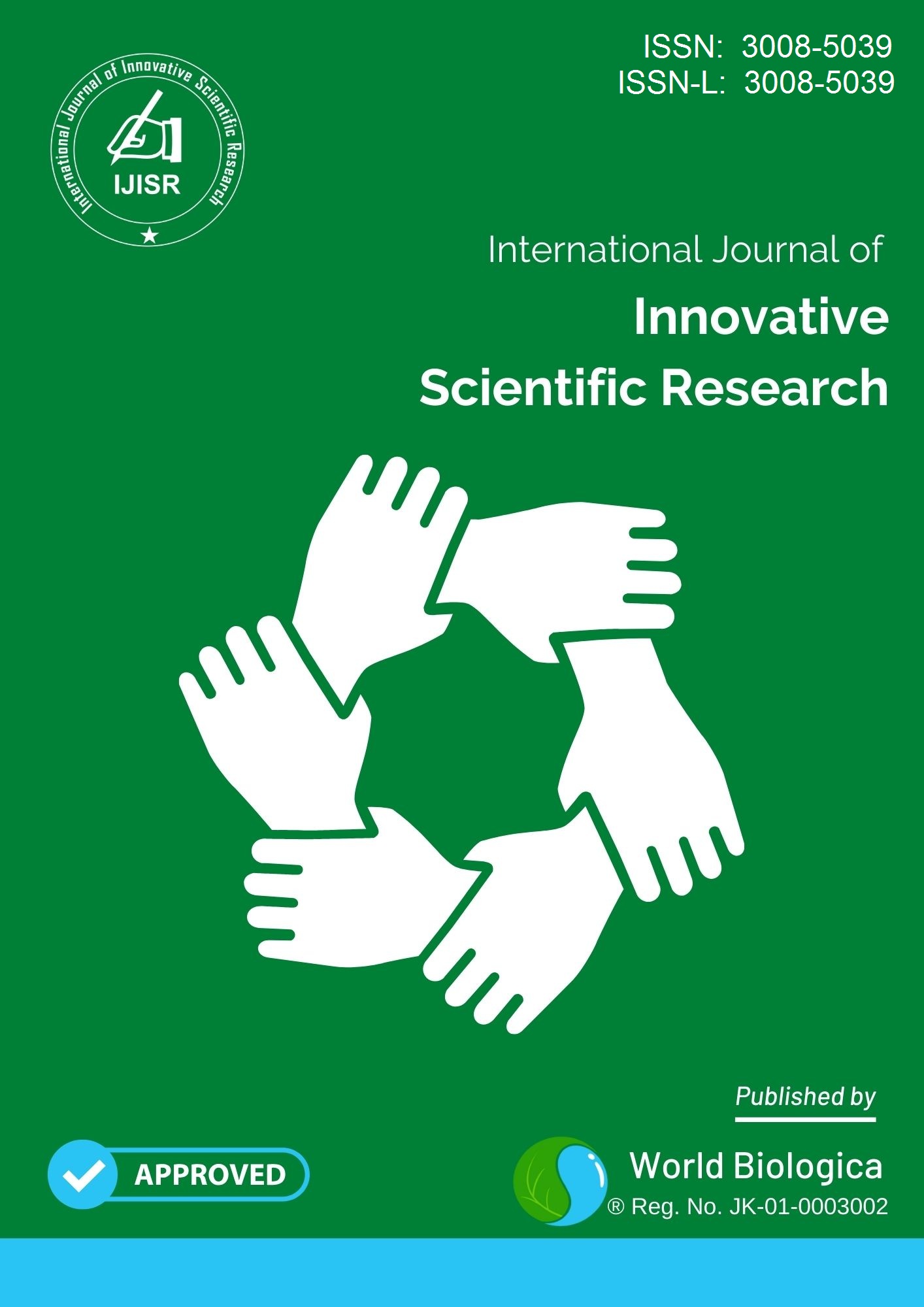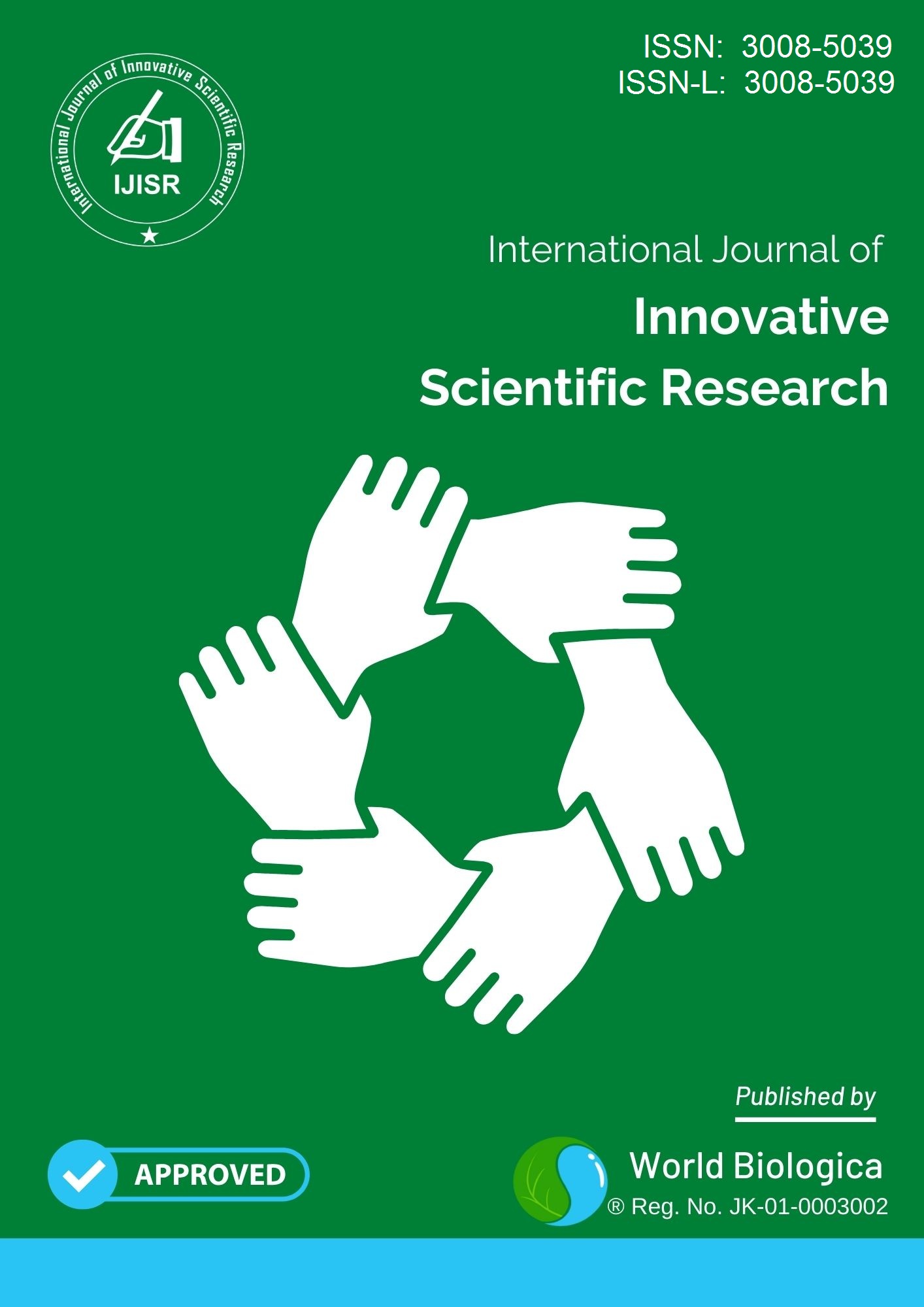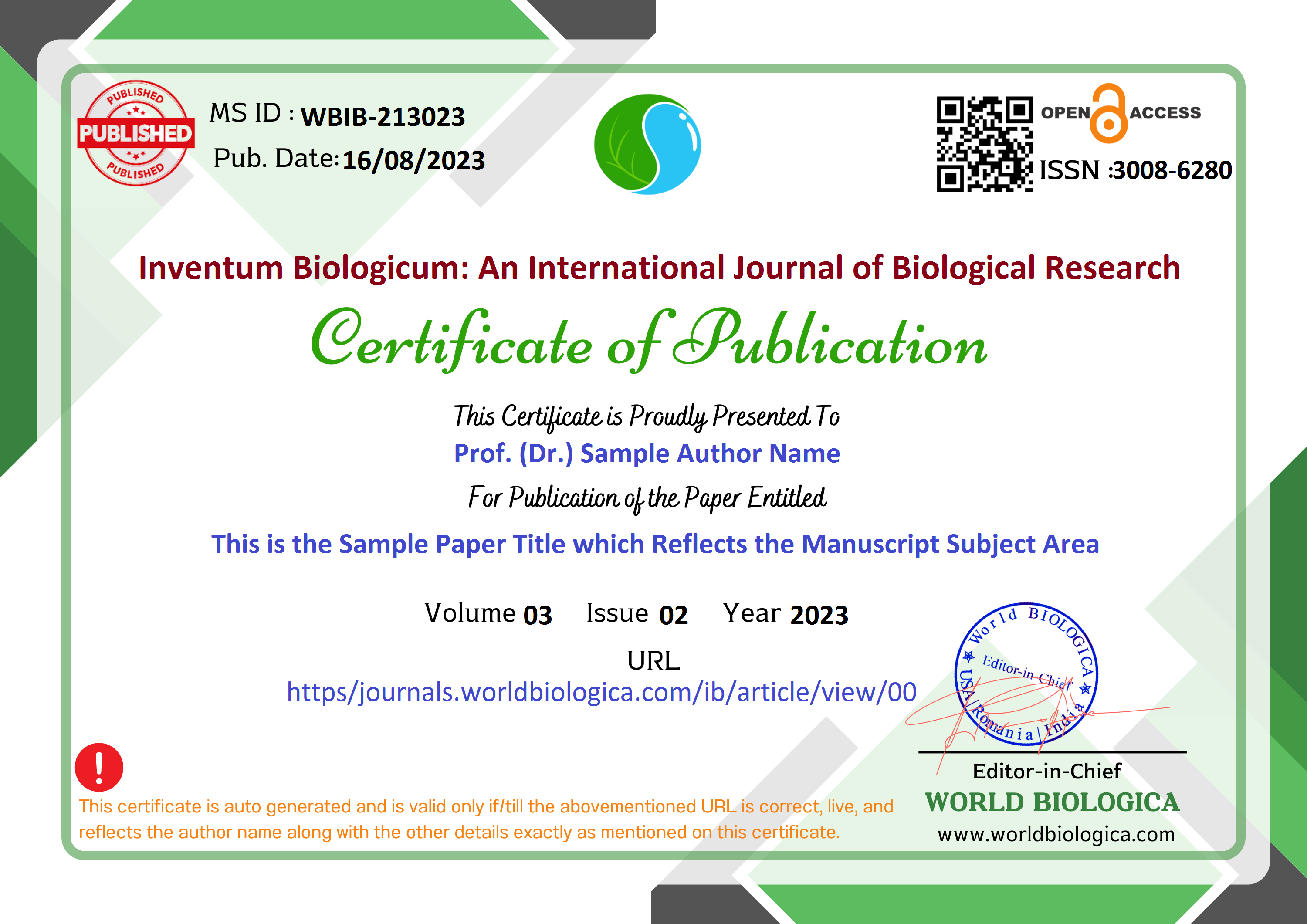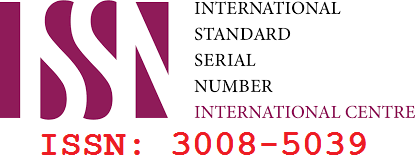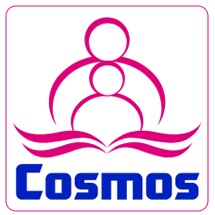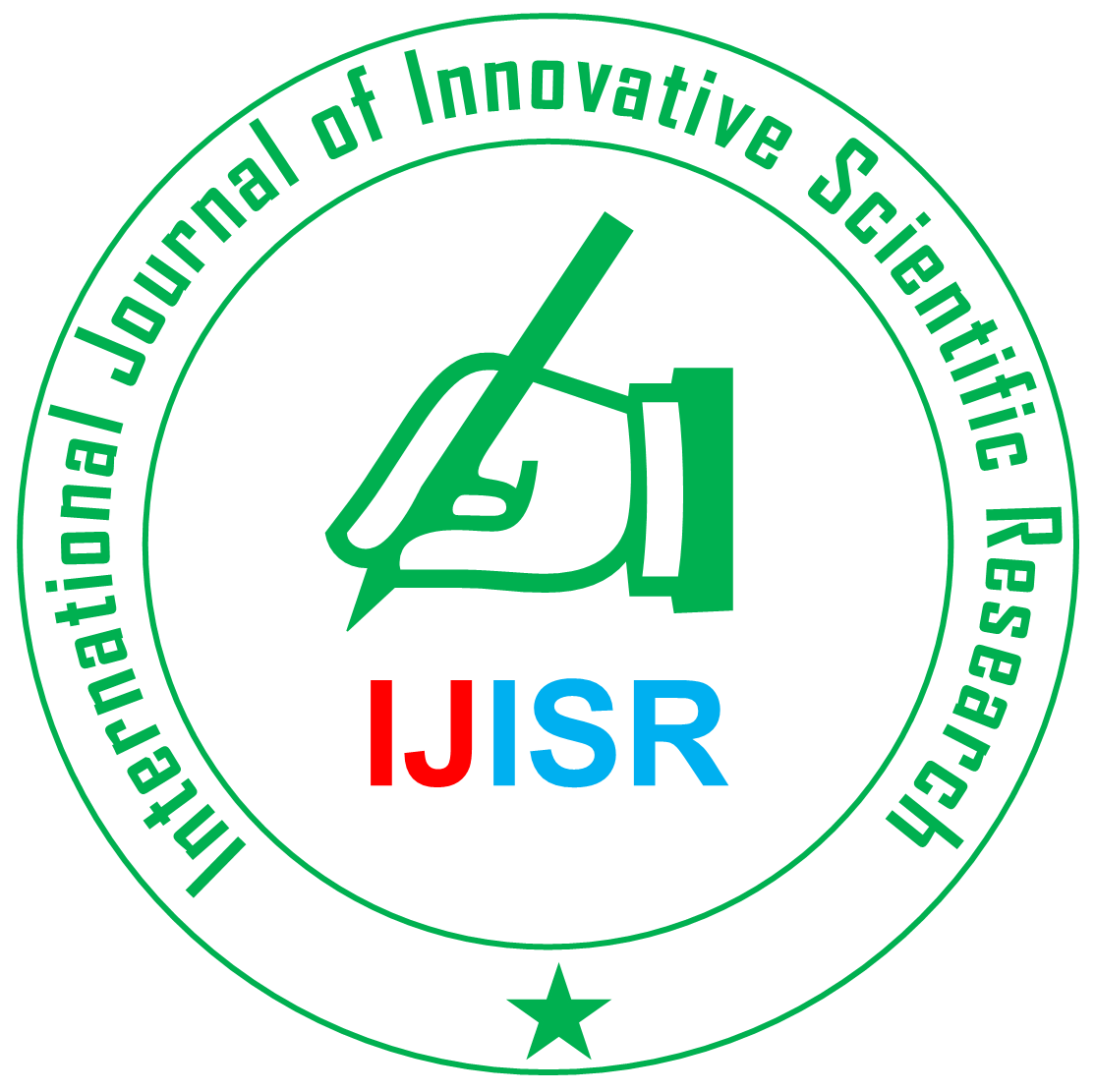Evaluating the Efficacy of Medicinal Plant Extracts in the Treatment of Candida Albicans Infections
Cuvinte cheie:
Candida albicans, Medicinal plants, Antifungal activity, Phytochemical analysis, Alternative therapy, Fungal infections, Bioactive compounds, Plant extractsRezumat
Candida albicans is a common fungal pathogen responsible for a variety of infections, particularly in immunocompromised individuals. The increasing resistance to conventional antifungal treatments necessitates the exploration of alternative therapeutic options. This study investigates the antifungal potential of various medicinal plant extracts against Candida albicans. Phytochemical analyses were conducted to identify active compounds, and their antifungal efficacy was evaluated using standard microbiological assays. The results demonstrated that several plant extracts exhibited significant inhibitory effects on Candida albicans growth. This suggests the potential of these medicinal plants as alternative or complementary treatments for Candida infections. Further research is needed to isolate specific bioactive compounds and understand their mechanisms of action.
##plugins.themes.default.displayStats.downloads##
Referințe
Ankri, S., & Mirelman, D. (1999). Antimicrobial properties of allicin from garlic. Microbes and Infection, 1(2), 125-129.
Chaturvedi, P., Dwivedi, S., & Bhattacharya, A. (2011). Antifungal efficacy of Azadirachta indica leaf extract against Candida albicans. Journal of Ethnopharmacology, 135(2), 175-177.
Das, B., Mandal, S., Sarkar, K., Mazumdar, I., Kundu, S., Sarkar, A.K. (2022) Contribution of Ethnic and Indigenous people in the Conservation of Plant Biodiversity in India. Adv. Biores., 13(3),209-229.
Kocić-Tanackov, S., Dimić, G., Lević, J., & Tanackov, I. (2014). Antifungal activity of oregano essential oil against Candida albicans. Journal of Medicinal Food, 17(2), 286-293. doi:10.1089/jmf.2013.0006
Martins, C. V. B., da Silva, D. L., Neres, A. T. M., Magalhães, T. F. F., Watanabe, G. A., Modolo, J. R. & de Resende, M. A. (2009). Curcumin as a promising antifungal of clinical interest. Journal of Antimicrobial Chemotherapy, 63(2), 337-339.
Pinto, E., Vale-Silva, L., Cavaleiro, C., & Salgueiro, L. (2009). Antifungal activity of the clove essential oil from Syzygium aromaticum on Candida, Aspergillus and dermatophyte species. Journal of Medical Microbiology, 58(11), 1454-1462.
Prashar, R., Hili, P., Veness, R. G., & Evans, C. S. (2001). Antimicrobial action of essential oils: the effect of dimethylsulphoxide on the activity of cinnamon oil. Letters in Applied Microbiology, 33(1), 25-28. doi:10.1046/j.1472-765x.2001.00957.x
Silva, N. C. C., Barbosa, L., Seito, L. N., & Fernandes, A. J. (2012). Antifungal activity of essential oils from Cymbopogon, Thymus, and Origanum species against oral pathogens. Brazilian Journal of Microbiology, 43(2), 676-683. doi:10.1590/S1517-83822012000200036
Descărcări
-
Download PDF (Engleză)
 Rezumat Views: 31,
Rezumat Views: 31,  Download PDF (Engleză): 8
Download PDF (Engleză): 8
Publicat
Număr
Secțiune
Licență
Copyright (c) 2025 International Journal of Innovative Scientific Research

Această lucrare este licențiată în temeiul Creative Commons Attribution-ShareAlike 4.0 International License.
